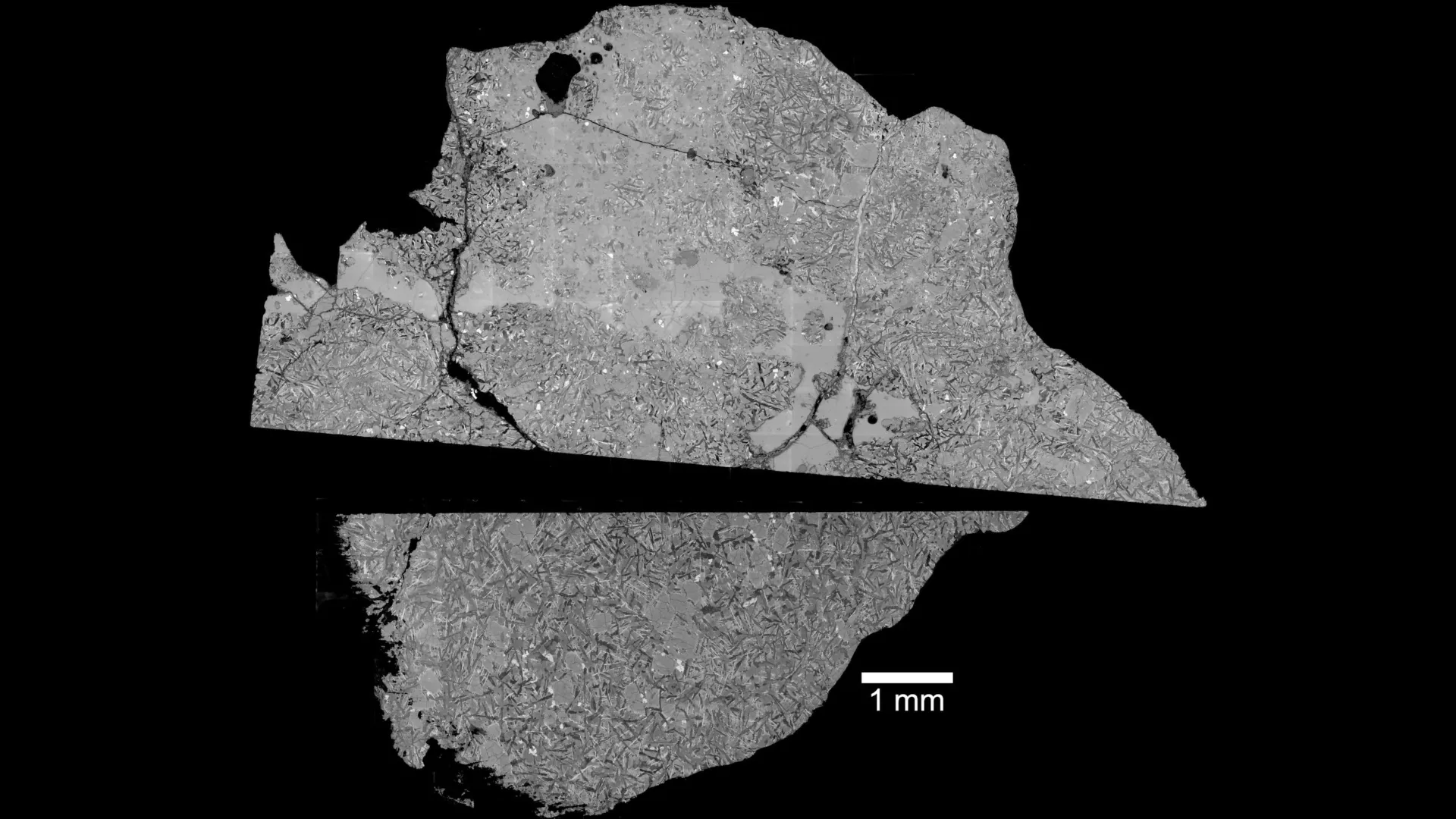A remarkable discovery in 2023 has provided significant insights into the Moon’s volcanic history. A meteorite, known as Northwest Africa 16286, has been dated at approximately 2.35 billion years, revealing crucial information about volcanic activity on the Moon. Researchers from the University of Manchester, UK, presented their findings at the Goldschmidt Conference held in Prague, showcasing how this unique rock helps to fill a significant gap in our understanding of lunar geology.
The analyses indicate that the meteorite originates from a time period from which few lunar samples have been recovered. This makes it the youngest basaltic lunar meteorite found on Earth. The rock’s distinctive chemical profile sets it apart from samples returned by previous lunar missions, suggesting it formed from a lava flow that solidified after emerging from deep within the Moon’s interior.
Dr. Joshua Snape, a Research Fellow at the University of Manchester, emphasized the importance of this discovery. He stated, “Lunar rocks from sample return missions are fantastic in the insights they provide us, but they are limited to the immediate areas surrounding those mission landing sites. By contrast, lunar meteorites can potentially be ejected by impact cratering occurring anywhere on the Moon’s surface.”
Insights into Lunar Volcanism
The meteorite, weighing 311 grams, contains relatively large crystals of olivine and is classified as olivine-phyric basalt. Its geochemical composition reveals moderate levels of titanium and high levels of potassium. The presence of a unique lead isotope composition indicates that it formed from a source within the Moon that had an unusually high uranium-to-lead ratio. This finding may offer clues about the mechanisms that enabled prolonged internal heat generation on the Moon.
Dr. Snape noted the significance of the sample’s age, stating, “It fills an almost billion-year gap in lunar volcanic history. It’s younger than the basalts collected by the Apollo, Luna, and Chang’e 6 missions, but older than the much younger rocks brought back by China’s Chang’e 5 mission. Our analysis suggests an ongoing heat generation process within the Moon, potentially from radiogenic elements decaying and producing heat over a long period.”
The discovery’s implications extend beyond the rock itself. It provides a clearer timeline of volcanic activity on the Moon, suggesting that such activity has continued for billions of years. Dr. Snape added, “Moon rocks are rare, so it’s always interesting when we get something that stands out and looks different to everything else. This particular rock provides new constraints about when and how volcanic activity occurred on the Moon.”
Future Research and Implications
The meteorite’s distinct characteristics, including melted glassy pockets and veins, suggest it was likely shocked by an asteroid impact on the Moon before being ejected and eventually landing on Earth. This shock event complicates the dating process, but researchers estimate its age with a margin of plus or minus 80 million years.
Research funding was provided by the Royal Society, and the team plans to publish their full findings in a peer-reviewed journal later this year. The study not only enhances our understanding of lunar geology but also guides future exploration efforts. With more analysis to determine its exact origin on the Moon’s surface, this rock could influence where future sample return missions may land.
As researchers continue to unravel the mysteries of the Moon’s geological past, the discovery of Northwest Africa 16286 stands as a pivotal moment in lunar science, highlighting the potential for future findings to reshape our understanding of the Moon’s volcanic history.
